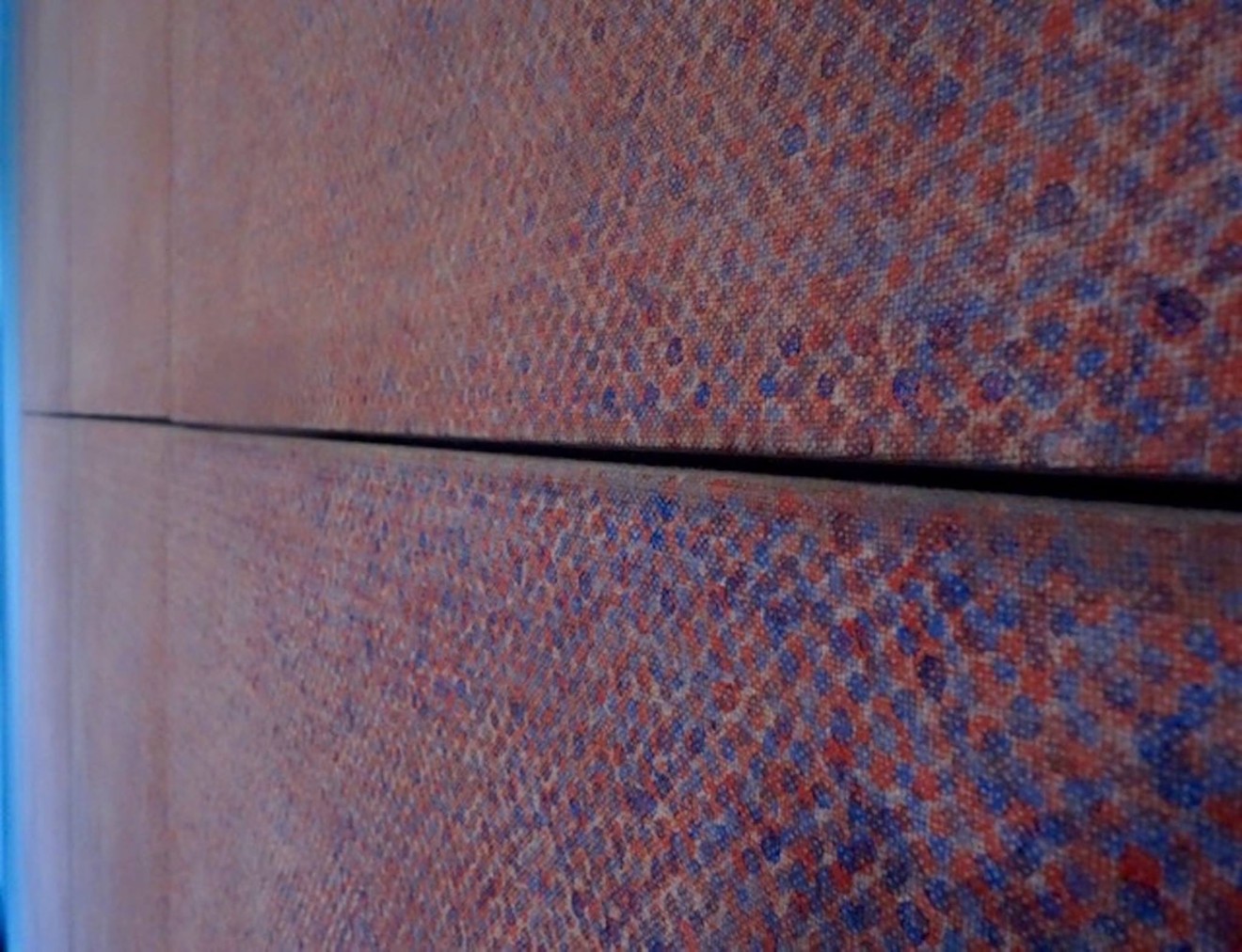Wilcox died from AIDS-related complications in 2012. He had been living and painting in the studio that would become The Wilcox Space for 15 years before his death.
When he died, all of his art — roughly 120 canvases along with hundreds of drawings — passed to his brother David Wilcox.
David says he was at loss as to what do with his brother’s art, until several months after his brother’s death, when sculptor and artist James Magee suggested that David create a space to show John’s work.
So that’s what he did.
“It’s been a really fun, exciting project, and it’s a way for me to stay connected to my brother and share his work with other people. It’s great,” David says. “I’m not a big promoter, but I think word of mouth has sort of seeped out and people have been able to get to know my brother. That’s what it’s all about.”
For the last five years, John’s old studio and residence, right next to Fair Park, has been a gallery and a memorial to John’s legacy. For each exhibit, David invites guest curators to go through John’s work and put together a show to display in the gallery.
This time, DMA associate paintings conservator Laura Hartman and artist Arthur Peña have donned the mantle of curator together and selected works that highlight the materiality and the process of John’s work. As part of their role as co-curators, Hartman and Peña will be writing papers about the exhibit to publish later.
“With this final show, what we wanted to focus on was John’s process and his ability of building up surfaces: working with various materials, being meticulous in his craftsmanship with these pieces,” Peña says.
The exhibit came together rather serendipitously, through a short chain of events beginning with David bringing some of his brother's damaged paintings to the DMA for restoration. That’s where Hartman first came into contact with Wilcox's work.
“I started looking at these panels, and they were so unusual and complicated to work on that I really needed to do more research on John’s work to understand the structure in order to actually do the restoration treatments. So, I started becoming really interested in John’s work,” Hartman says. “Through the restoration treatment, [David] asked if I would do the last of this series of curated exhibitions, and then I pulled Arthur in because his painting technique reminded me so much of John’s.”
Wilcox’s painting style is, in a word, subtle. His paintings are characterized by layer upon layer of muted colors and meticulously repeated formal patterns that march across large canvases. The compositions are so intricate that without close examination, they almost appear to be one muted tone of a solid color.
“You spend enough time looking at them, and you realize that there is so much work that goes into creating them and so much tedious, repetitive work that goes into them … it makes you pay attention because anybody putting that much into something kind of makes you stop to think about the process or the technique,” Hartman says.
Although Hartman and Peña worked closely with one another in the curation of this exhibit, they came at it from different perspectives: Hartman from the objective, process-based side, and Peña from the artistic and philosophical side.
“I was brought on about a year and a half ago because the works that I make as a painter have been laborious, very much about repetition and exploration of materials in my own approach to painting. So I’m here as the voice of a painter, to see the work in that aspect, to think about it in terms of not only artistic production but also maybe the philosophical headspace that a painter approaches a work with,” Peña says.
Both Hartman and Peña say they gravitate toward Wilcox's meticulous attention to detail. There’s a mystery to his artwork that pulls at the eye for a second, third and fourth glance.
“Curating this show, not only did I connect with John’s work in that way but also reflected [on] the nature of making and how we do things that we think won’t last; we just have no idea because here we are with the work,” Peña says. “John’s story is continuing to be exposed to a new audience, and that’s a really powerful thing, to know for a fact that art can outlive the artist and continue the conversation that was originally intended.
The Sixth Installation at the Wilcox Space, 824 Exposition Ave., No. 9, on view through spring 2018. Visit utdallas.edu.













